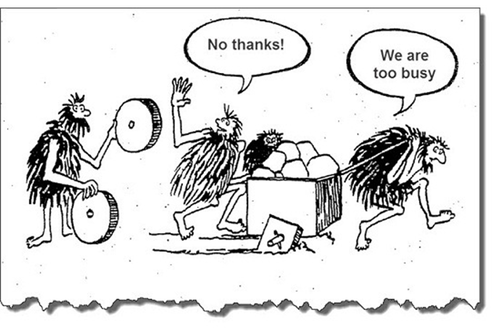Stop Reacting: Why Proactive Management Is Better
Why are we so often caught reacting to an interminable sequence of crises that seem to reoccur more often than they should?

Dealing with Immediate Problems Keeps Us from Thinking How to Do Things Better
It is human nature to want to take the path of least resistance when dealing with sudden issues that arise in the normal course of business. It is always easier to deal with a customer issue, right there and then, than to step back and think about how to prevent it from happening in the first place.
Preventing a problem from happenning again requires effort. You would have to think about the root cause that cause the issue, then develop a process, policy, or system that prevents it from happening again, and then communicate to everybody so the solution is properly embraced and implemented.
If it is clear that reacting to crises in the moment is not as effective in the long-term, why do we keep doing it? Is it because fixing problems one at a time as they come, mindlessly, and being extremely busy makes us feel like we are accomplishing something?
Reactive vs Proactive Culture
Here at CommandHound, we have worked with countless clients who face this reactive vs proactive conundrum every day. The biggest issues are always time and resources:
- How are we suppossed to find the time to think about doing things more efficiently if we can barely keep up with what we need to do every day?
- How are we suppossed to change when the recognition is on getting things done on not on improving things?
- Where are we going to get the resources to allocate to the designing of new more efficient ways of doing things?

It Can Seem Hard to Choose between a Reactive vs Proactive Business Culture, But It’s Really Not
When it is presented in such clear terms, you would expect that every company would choose to save time and resources by proactively addressing potential issues before they even come up. But that is simply not case. Many companies are worried that the initial investment of time and energy to prevent issues will be too much, when really, fixing issues after they happen requires exponentially more time, financial investment, and energy.
So, once and for all, let’s do away with the idea that a reactive company culture is just as good or better than a proactive one. Now that we’re on the same page, how do you make sure that your company is doing all that it can to avoid problems before they get out of control?
How to Build a Proactive Management Culture
Clearly Communicate Vision and Goals
Before starting any cultural transformation, company leadership needs to clearly communicate to team members the updated policy (i.e., proactive is better than reactive management) and how it will affect daily operations. We’ve written about the importance of clarity before, so check out our guide to how clarity can change everything at your organization.

Clear Communication Will Help the Transition to a More Proactive Approach to Issues
Invest in Process Development and Training
Turn to professional change management consultants, or even online guides, to help develop a plan to develop and implement the processes to make the new proactive response to things a part of your culture. Here at CommandHound, we work with change management firm DNA Worldwide to ensure that our clients have clear steps in place to change company cultures. Learn more about the perks of CommandHound + DNA change management assistance here: 6 Tips to Accountability Adoption and Change Control
Prioritize Accountability
A proactive management culture requires accountability at all levels to monitor, reward, and incentivize the required new behaviors. Accountability and proactive management go hand in hand to make sure things get done.
An accountability platform like CommandHound can help smooth the transition and the implementation of new processes, policies, and systems required in any major change management undertaking. CommandHound monitors tasks and deadlines so that individual accountability is always guaranteed, and escalates only when nevessary to make sure things get done and that nothing falls through the cracks.

Use CommandHound to Build a Culture of Accountability
Would you like to learn more about CommandHound’s approach to accountability as a way to enable change?
